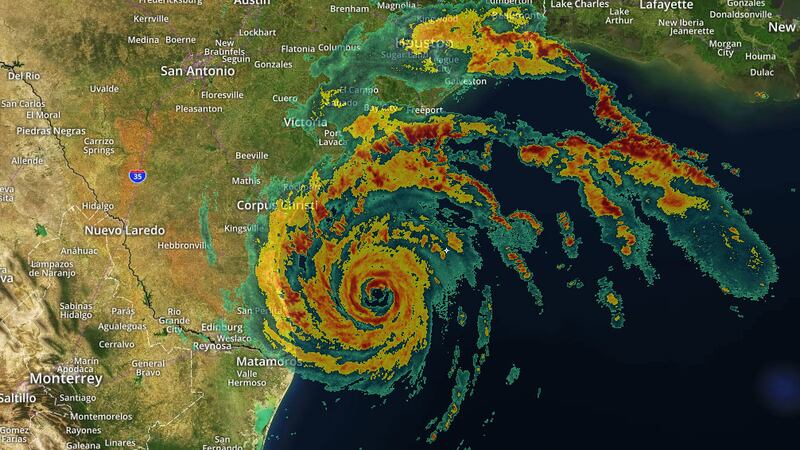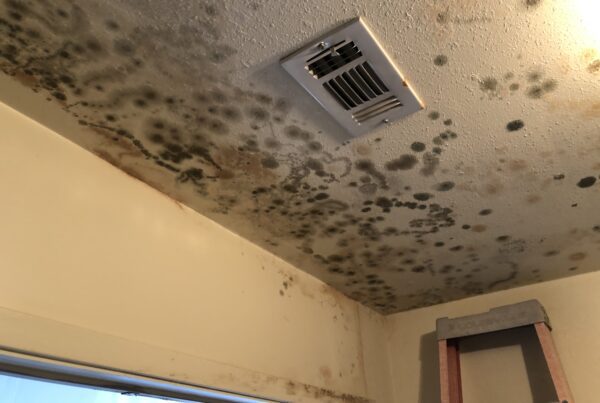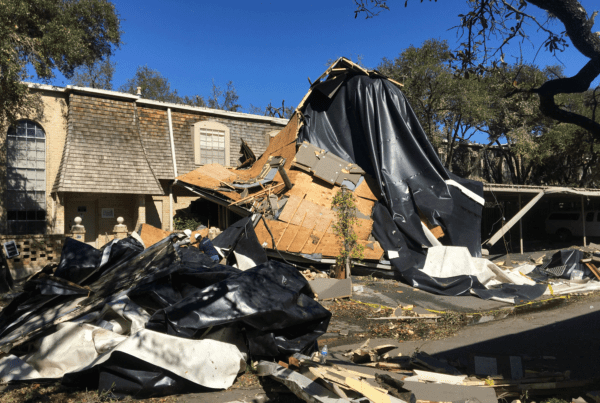June 1st marks the beginning of the Atlantic hurricane season. Residents all over Texas, especially those living on the gulf coast, will undoubtedly pay closer attention to the weather and any activity in the tropics. According to NOAA, forecasters are predicting a above-normal Atlantic Hurricane season. They are forecasting a rage of 13-19 named storms (winds of 39 mph or higher). Of those, 6-10 are forecast to become hurricanes (winds of 74 mph or higher), including 3-5 major hurricanes (category 3,4, or 5; with winds of 111 mph or higher). They explain that there is a continued ENSO-neutral condition, warmer than average ocean temperatures, forecasts for weak wind shear, and the potential for higher activity from the west African monsoon. All of these “ingredients” tend to favor tropical storm formation.
In case you have ever felt overwhelmed by the jargon that meteorologists use during hurricane season, below is a guide that explains some of the most common terms.
- Tropical Cyclone – The catch-all name for any tropical depression, storm, hurricane, typhoon (what hurricanes are called in the Northwest Pacific basin) or cyclone (what hurricanes are called in the South Pacific and Indian Ocean basins). These systems with well-organized thunderstorms around a closed, low-level center derive their energy from warm ocean water.
- Tropical Depression – This tropical cyclone has maximum sustained winds of 38 mph or less.
- Tropical Storm – When maximum sustained winds reach 39 mph, the system is called a tropical storm, and gets the next name in the official list for that basin in that year. A tropical storm can have maximum sustained winds of up to 73 mph.
- Hurricane – The term for tropical cyclones in either the Atlantic or Eastern Pacific basins which have maximum sustained winds of at least 74 mph.
- Major Hurricane – These are hurricanes with maximum sustained winds of at least 111 mph, at least Category 3 intensity on the Saffir-Simpson Hurricane Wind Scale. The term “major” does not imply that hurricanes of a lower wind intensity, or even tropical storm or depressions, can’t have major impacts from storm surge, rainfall flooding, or winds.
- Hurricane or Tropical Storm Watch – This means hurricane (sustained winds of 74 mph or higher) or tropical storm (39 to 73 mph sustained winds) conditions are possible within the watch area, generally within 48 hours. Hurricane watches are typically issued by the NHC (National Hurricane Center) 48 hours in advance of the onset of tropical storm-force winds, which can make final preparations hazardous.
- Hurricane or Tropical Storm Warning – Hire a licensed Mold Remediation Contractor – it is important to hire a licensed Mold Remediation Contractor to perform the remediation as they have the knowledge and understanding of all the Texas Mold Regulations. An easy way to search for a contractor is on the Texas Department of Licensing and Regulation website, as any company with an active license will appear in their database.
- Storm Surge – The rise in sea level above the typical tidal level caused by a tropical cyclone or other storm pushing water toward the coast. This storm surge is typically highest as a storm is making landfall, immediately to the right of the path of the center of the storm in the Northern Hemisphere.
- Storm Surge Watch – A life-threatening water rise from storm surge is possible in the area, generally within 48 hours. Areas in storm surge watches may be under at least voluntary evacuations by local emergency managers.
- Storm Surge Warning – A life-threatening water rise from storm surge is expected in the area, generally within 36 hours. Areas in storm surge warnings may be under mandatory evacuation orders by local emergency managers.
- Wind Shear – This is simply a change in wind speed and/or direction. In tropical storms and hurricanes, it’s the change with height that’s important. If wind shear is strong, tropical systems can get tilted or even ripped apart. If shear is low, that will allow thunderstorms to remain clustered near the low-pressure center, concentrating the storm’s heat engine and allowing it to gain strength.
If you are looking to learn more “hurricane terms”, take a look at weather.com or National Hurricane Center. The more knowledge you have during a tropical storm or hurricane the better. Until next time my friends, be prepared and stay safe!
Reference: “Hurricane Season Terms You Should Know” by Jonathan Erdman and “NOAA predicts above-normal 2025 Atlantic hurricane season” by NOAA





